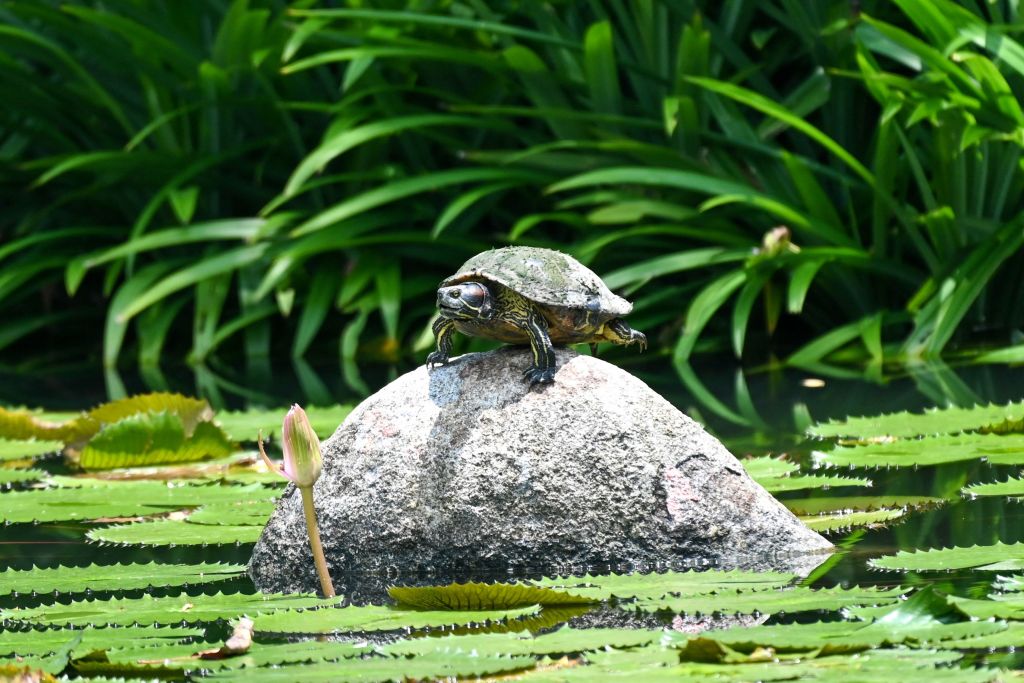Many people enjoy keeping exotic pets such as fish, turtles, and frogs in their homes. However, some of these animals can pose a serious threat to the natural ecosystems if they are released or escape into the wild.
A new study by researchers from the University of Florida and the U.S. Geological Survey has identified the most high-risk invasive species among the freshwater pet trade in the United States.
What are invasive species and why are they harmful?
Invasive species are non-native organisms that can establish themselves in a new environment and cause ecological, economic, or social harm.
They can compete with native species for food and habitat, introduce diseases, alter water quality, and disrupt natural processes.
According to the study, invasive species are responsible for about 40% of the animal extinctions that have occurred since the 17th century.
The study focused on freshwater animals, which are particularly vulnerable to invasions because of their limited dispersal abilities and high dependence on water availability.
The researchers analyzed data from the U.S. Fish and Wildlife Service, the U.S. Geological Survey, and online sources to identify the most common and popular freshwater pets in the country.
They then assessed the potential invasiveness of each species based on their biological traits, environmental tolerance, and history of invasions elsewhere.
Which freshwater pets are the most high-risk invasive species?
The study found that out of the 1,722 freshwater pet species recorded in the U.S., 156 were classified as high-risk invasive species.
These include 86 fish, 36 amphibians, 18 reptiles, 12 crustaceans, and four mollusks. Some of the most notorious examples are:
The red-eared slider turtle (Trachemys scripta elegans)
Is native to the southeastern U.S. but has been introduced to many other regions of the world through the pet trade. It can outcompete and displace native turtles, damage aquatic vegetation, and transmit diseases.
The bullfrog (Lithobates catesbeianus)
Native to eastern North America but has been widely introduced to other continents as a food source or a biological control agent.
It can prey on and compete with native amphibians, fish, and invertebrates, and carry a deadly fungal pathogen that affects amphibians.
The lionfish (Pterois spp.)
Native to the Indo-Pacific region but have invaded the Atlantic Ocean and the Caribbean Sea through accidental or intentional releases. They can reduce the abundance and diversity of native reef fish, coral, and algae, and have few natural predators.
The study also identified 59 species that were classified as medium-risk invasive species, and 1,507 species that were classified as low-risk or unknown-risk invasive species.
The researchers noted that the risk assessment was based on the best available information, but there may be uncertainties and gaps in the data.
Also Read: 5 Invasive Species Thriving Due to Climate Change and Their Effect on the Ecosystem According to Studies
How can pet owners prevent the spread of invasive species in freshwaters?
The researchers urged pet owners to be responsible and informed about the potential impacts of their pets on the environment.
They suggested some actions that pet owners can take to prevent the spread of invasive species in freshwaters:
- Do not release unwanted pets into the wild. Instead, return them to the pet store, donate them to a local aquarium or zoo, or contact a veterinarian or wildlife agency for advice.
- Do not dump aquarium water or plants into natural water bodies. Instead, dispose of them in the trash or compost.
- Do not transport live pets across state or international borders without proper permits and inspections.
- Do not purchase or trade pets that are illegal, endangered, or invasive in your area. Check the local and federal regulations before acquiring a new pet.
- Educate yourself and others about the risks and impacts of invasive species. Report any sightings of invasive species to the appropriate authorities.
By following these steps, pet owners can help protect the biodiversity and health of freshwater ecosystems, and enjoy their pets without harming the environment.
Related article: Invasive Species May Beat Climate Change to Extinction of Endangered Plants
© 2023 NatureWorldNews.com All rights reserved. Do not reproduce without permission.





